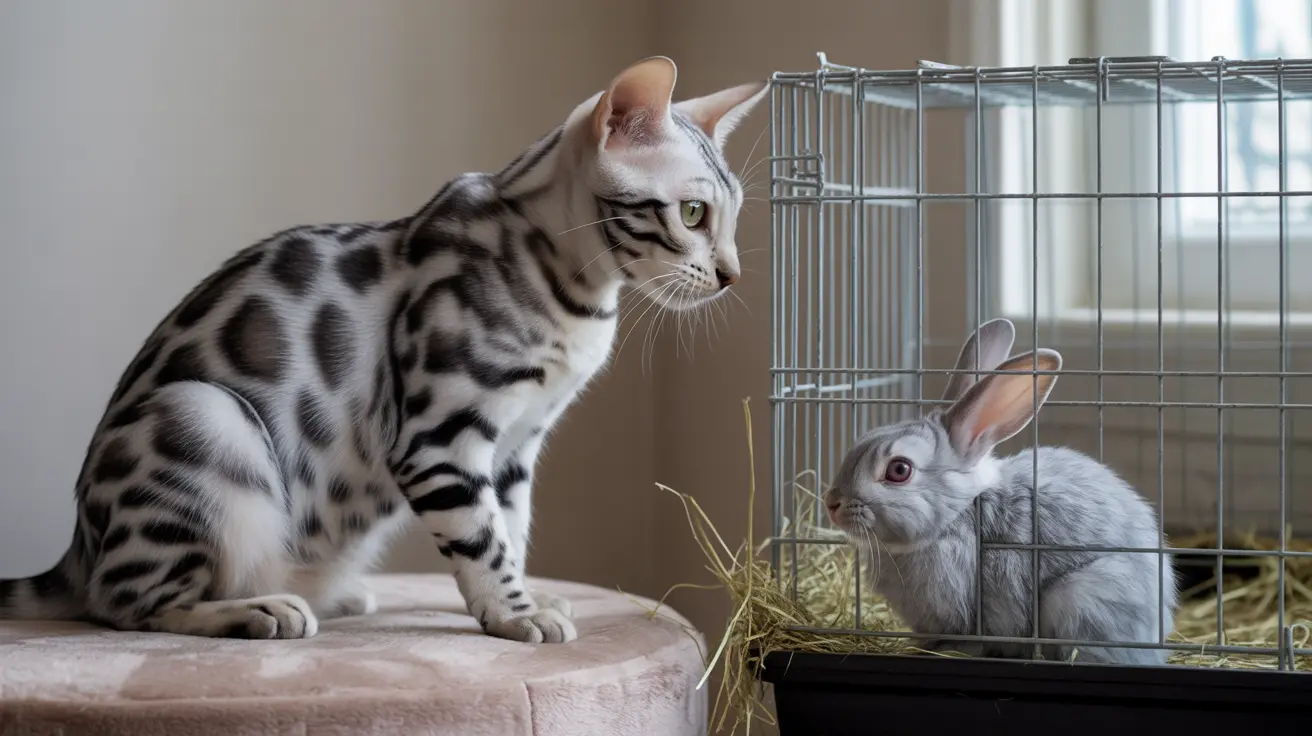The relationship between cats and rabbits is complex and potentially dangerous, primarily due to cats' natural predatory instincts. While some households successfully maintain both pets, it's crucial to understand the risks and necessary precautions to ensure both animals' safety and well-being.
In this comprehensive guide, we'll explore the natural dynamics between cats and rabbits, identify potential risks, and provide essential safety measures for multi-pet households.
Understanding Cat Predatory Behavior
Cats are natural predators with strong hunting instincts that can pose a serious threat to rabbits. Even well-fed domestic cats maintain their predatory drive, which can manifest in stalking, pouncing, and potentially attacking rabbits.
This behavior isn't necessarily linked to hunger - it's an inherent part of feline nature. Even playful behavior can quickly escalate into dangerous situations for rabbits.
Risk Factors and Warning Signs
Physical Risks
Cats can harm rabbits through various means:
- Direct attacks or bites
- Scratches from playful swatting
- Stress-induced health issues in rabbits
- Accidental injury during chase or play
Behavioral Indicators
Watch for these warning signs that your cat may view your rabbit as prey:
- Intense staring or tracking movements
- Tail twitching while watching the rabbit
- Crouching and stalking behavior
- Attempting to paw through cage bars
Creating Safe Living Arrangements
The safest approach is to maintain separate living spaces for cats and rabbits. This might include:
- Designated rooms for each pet
- Secure, cat-proof rabbit enclosures
- Baby gates or other physical barriers
- Supervised interaction only
Safe Introduction Strategies
If you decide to attempt introductions, follow these steps:
- Start with physical barriers between pets
- Allow scent familiarization
- Supervise all interactions
- Reward calm, non-aggressive behavior
- Never force interaction
Long-term Management Tips
Successful cohabitation requires consistent management:
- Regular monitoring of both animals
- Maintaining escape routes for rabbits
- Keeping cat's nails trimmed
- Providing separate feeding areas
- Ensuring stress-free environments for both pets
Frequently Asked Questions
Do cats naturally try to attack or hunt rabbits, even if they live together in the same house?
Yes, cats naturally view rabbits as prey due to their innate hunting instincts. Even well-socialized house cats may exhibit predatory behavior toward rabbits, regardless of how long they've lived together.
How can I safely introduce my cat to a pet rabbit to reduce the risk of injury or stress?
Begin with barrier introductions, allowing pets to see and smell each other without direct contact. Progress slowly, always supervise interactions, and reward calm behavior. Never force interactions between the animals.
What signs indicate that my cat might be exhibiting predatory behavior toward my rabbit?
Watch for stalking, intense staring, tail twitching, crouching, and attempted pouncing. These behaviors indicate your cat views the rabbit as prey rather than a potential companion.
Is it safe for cats and rabbits to share a living space without constant supervision?
No, it's generally not safe for cats and rabbits to share unsupervised space. Even if they appear to get along, predatory instincts can surface unexpectedly, putting the rabbit at risk.
What are the best ways to prevent my cat from harming or stressing my pet rabbit?
Maintain separate living spaces, use physical barriers, provide escape routes for the rabbit, keep the cat's nails trimmed, and never leave them unsupervised together. Consider housing them in different rooms or areas of your home.
Conclusion
While cats and rabbits can coexist under careful management, their relationship requires constant vigilance and appropriate safety measures. Understanding and respecting their natural instincts while maintaining proper separation is crucial for both pets' safety and well-being.
If you're considering having both pets, carefully weigh the risks and commitment required to ensure a safe environment for both animals. When in doubt, consult with a veterinarian or animal behaviorist for professional guidance.






